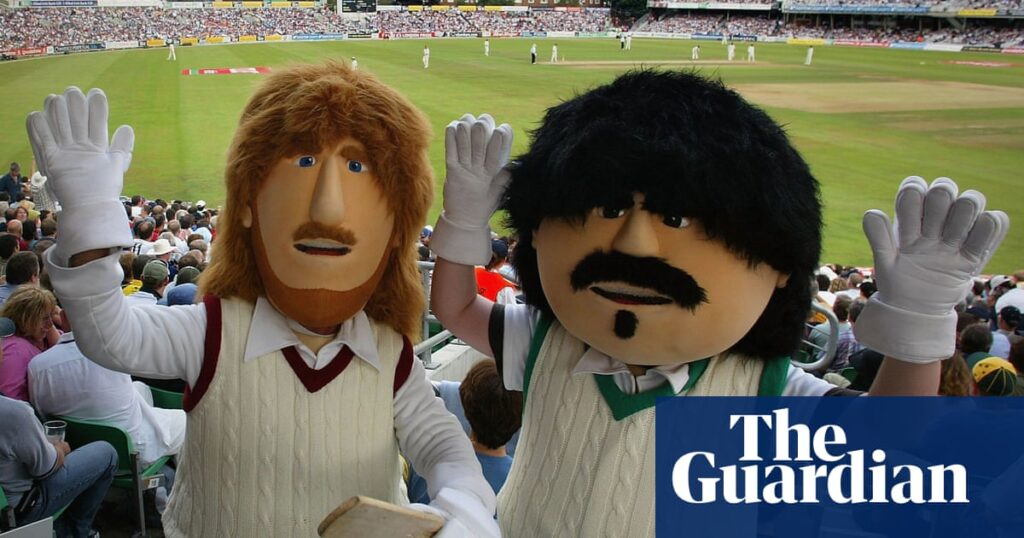Dear cycling, hello from 2005. It’s dusty back here, piles of unloved pagers, a cityscape of VHS towers and chest freezers packed with Turkey Twizzlers.
It’s been a strange sort of summer – switchbacking in mood. On 6 July, London won the rights to hold the 2012 Olympics, a last-minute heist from under the Parisian nose; the next day terrorists murdered 52 people on the London transport network. The country was in a state of high alert, but the Australian cricket team, who had landed in early June, stayed to play in the Ashes. I’ll always be grateful for that decision – it turned out to be not only our last summer, but also our greatest.
I hear that this is your last summer too, the final time the Tour de France will be shown on terrestrial television after years on ITV. As a casual kind of cycling fan, I’ll miss it, like the sudden disappearance of a holiday friend who you’ve grown up next to, summer after summer, from jelly shoe to Birkenstock.
I’ve always enjoyed becoming a temporary expert on the gradients of obscure Alpine hills, the timbre of the cobbles and the tribes of razor-faced, skinny-legged domestiques set the task of dragging their team leaders into position, ready to pounce.
And I love the coverage – part travelogue, part Eurovision, part technical micro-detail. I love the plane trees, lines stretching and shading the peloton, eyes on the prize. I love the villages, the tricolours, the spectators and their insane cheek-by-jowl roars of encouragement (you might have guessed that I’m a Francophile, though I draw a line at the Pas-de-Calais cricket origin story). And your heroes and villains have been our equal: for Lance Armstrong, see Hansie Cronje; for marginal gains, see sandpapergate.
But back to 2005, when our final terrestrial Test summer did not start until 21 July, by which stage the Tour was almost finished and Armstrong was about to collect win number seven – another one that did not stand the test of time. Our TV coverage was being carried by Channel 4 and had been since they pinched it from the BBC in 1999.
Their work was excellent, good-humoured and innovative, and they bowed out with a bang that year. The decisive Oval Test, the last of the summer, was watched by an average of three million over 15 sessions – the highest average audience for cricket since Channel 4 took over. It also took 23.3% of audience share during the last day, making it the most-watched channel of the day, for the first time in its history.
I don’t know if you paid any attention to cricket that summer; probably your feet were still in an ice bucket and your thoughts in the mountains. But we grabbed the British consciousness and would not take our sticky paws off. We were everywhere, all over the newspapers, television and magazines. When you walked along the street, stationary cars, windows down, builders on the scaffolding, everyone seemed to be tuned into Test Match Special. Simon Jones, a fast-bowling maverick, who had been stung by an old-fashioned tabloid kiss-and-tell during the first Test, suddenly became the country’s eye candy. Damien Martyn suffered a similar fate on the front of a women’s magazine in Australia.
On the final day of the third Test at Old Trafford, with the series 1-1, people were queuing by the early hours, drawn to the match in streams like a Lowry painting, and 15,000 were turned away, the ground groaning at its down-at-heel seams. Those who had been lucky enough to slip inside watched a brilliant century from Ricky Ponting in another thrilling match – a thrilling draw, but there is not time to explain that for now.
All five days were sold out in advance at Trent Bridge for the fourth Test and The Oval for the fifth and after the success of their big screen at Regent’s Park during the Lord’s Test, the ECB organised more, at Wollaton Park and Clapham Common.
after newsletter promotion
The madness even hit the Australians. Their superstar wicketkeeper Adam Gilchrist, who was being hunted down by England’s colossus Andrew Flintoff in each successive Test, said: “I knew I’d hit rock bottom when one night I rolled over in bed to give my wife Mel a kiss goodnight and all I saw was Freddie bloody Flintoff.”
After England won, there was a huge parade in Trafalgar Square. You won’t believe it but thousands of people turned up, tens of thousands, and more as two double-decker buses crawled along from Mansion House, London hanging out of the window like Melbourne did to Frank Worrell’s Australians in 1961. Then the squad, fat with disbelief and bleary-eyed, were invited to a reception in Downing Street, where they strong-armed Tony Blair into opening some wine. It was magical. And then everything changed.
So wave the bunting and enjoy yourselves over the next three weeks. And don’t worry, the coverage will be wonderful next year – knowledgable and classy and technically brilliant. It’s just that fewer people will drop by, and those that do won’t be strangers unexpectedly falling in love with the spoke and the wheel as the French countryside rolls by. See you somewhere over the paywall.
Yours affectionately, English (and Welsh) cricket.
This is an extract from the Guardian’s weekly cricket email, The Spin. To subscribe, just visit this page and follow the instructions.


